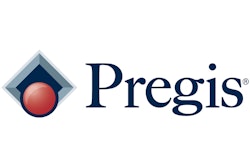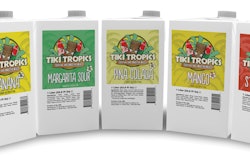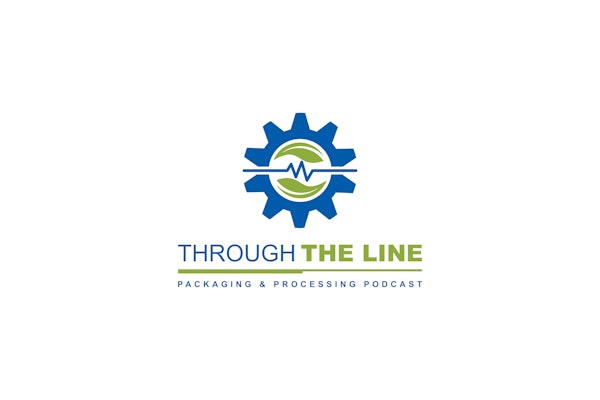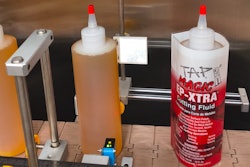Described by its organizer, Plastic Technologies Inc., as a showcase for new packaging technology and a forum for manufacturers to meet and learn about the future of packaging, The Packaging Conference was held February 3-5 in Orlando, FL.
Sustainable packaging was just one of the many topics on the program, and among those who painted an encouraging picture of how the beverage sector has gotten greener was Eusebio Ang Sanchez, Chief Procurement Officer at Arca-Continental. The third largest Coca-Cola bottler in the world and a producer of many popular snack products, as well, the firm is headquartered in Tampico, Mexico, and has plants in Argentina and Ecuador, too.
Sanchez’s presentation was titled “Packaging Evolution.” In it was one slide that illustrated how, not counting the liquid itself in the bottles, a pallet of PET soft drink bottles that might have weighed 33.3 kg in 2001 weighs just 22.5 kg in 2013. Why? Because everything from bottles to closures to corrugated slip sheets to the shrink wrap used to create a multipack has been lightweighted significantly.
Sanchez concluded his presentation by assuring his audience that innovation is absolutely essential to the growth of Arca Continental’s businesses, and that no part of their business could be more dynamic than packaging. Social responsibility, he added, is fundamental, so suppliers in the packaging sector would do well to bring solutions that are beneficial to the environment.
Additional insight into the Mexican market—and again it had a sustainable packaging angle—was provided by Darlene Kober, Director of Global Marketing & Strategy at Hexacomb Corp. That firm is a producer of Hexacomb honeycomb, a cushioning, bracing, and protective packaging material made via a proprietary process involving kraft linerboard and water-based adhesives. The paper is sliced into strips that are glued together to form a pattern of nested hexagonal cells similar in appearance to a beehive honeycomb.
A version of this material called HexStack has proven especially popular in Mexico lately among brand owners that have been adding large containers—think 2-gal PET—to their packaging formats. The products themselves range from juice to detergents, but whatever goes inside these large containers, their popularity is driven partly by bulk-driven retailers in whose stores pallet loads are also used for retail display.
Prior to the arrival of HexStack, corrugated trays and partitions had been used to secure individual bottles, and usually some addition of shrink wrap has been involved, too. But this approach requires so much material it averages as much as 31 cents/bottle. It’s also suboptimal from a sustainability perspective. Moreover, layers can’t be stacked very high on a pallet.
Another pre-HexStack approach taken by some brand owners in Mexico is the use of a layer of particle board combined with a slip sheet of corrugated. By eliminating the need for corrugated partitions, this brings the cost down to about 11 cents/bottle. But the particle board breaks too frequently, which causes the load to collapse.
Yet a third approach was to do away with all the protective corrugated and design the primary package, the bottle, with a concave base so that all the bottle necks of one layer would nest into the layer of bottles above them. Then shrink wrap was used to unitize the load. But this didn’t work because vibration during transport moved bottles out of place and the layers would collapse.
Enter the HexStack solution. One HexStack pad, approximately 1 inch thick, is used between bottle layers. The pad has die-cut holes into which bottle tops are inserted. The end result is a pallet load of bottles nicely stabilized at a cost of about 8.4 cents per bottle. About half the amount of paper-based material is used compared to corrugated trays/partitions, and personnel have about half as much material to stack, bail, and recycle. And more merchandise can be stacked in the same amount of space.
What about consumers?
But what are consumer attitudes about going green? That’s an area of research being explored for some time now by the Shelton Group, specifically in its annual EcoPulse survey. Lee Ann Head, Vice President of Research, was on the TPC program to bring the audience up to speed on just what they’re hearing from consumers. Notable:
• In 2009, 60% of survey respondents said they were searching for greener product options. In 2012, it was 70%.
• When it comes to product categories, 68% say they’re looking for greener products in light bulbs/fixtures, 65% in home cleaning products, 63 percent in paper, 55% in laundry/dish washing, 53% in food/beverages, and 47% in personal care.
• When it comes to who cares most about greener products, Shelton Group segments consumers into four groups: Seekers (29.6%), Skeptics (28.8%), Actives (24.5%) and Indifferents (17.1%). Actives, she noted, are voracious label readers and want details on the package.
Head reminded her audience that while environmentally friendly packaging can help, things like where does the product come from, what does it cost, and what is its brand are more persuasive. Having said that, she emphasized that packaging and its sustainability quotient can still be a tie breaker, all things being equal, that causes a consumer to pick one product over another.
She also cautioned that consumers might take a dim view of really cool sustainable packaging innovation. She cited packages like Seventh Generation’s molded pulp bottle for liquid laundry detergent as a good example. It’s made from 70% recycled ccorrugated (OCC) and 30% old newspapers (ONP), and any packaging geek worth his or her salt can’t help but admire how ingenius and innovative this packaging concept is. But consumers interviewed by Head and her colleagues express serious concerns about structural reliability and leakage. Such research, of course, is anecdotal and qualitative as opposed to quantitative. But that doesn’t make it any less interesting.
Head concluded her presentation with advice on how to leverage packaging for a sustainability home run. Her advice:
• Keep it simple and make sure it’s convenient.
• Make the sustainable packaging message more prominent on the package, as in why would a major cereal maker put its “100% recycled paperboard” message on the bottom of its cartons?
• Make packaging innovations make sense with the brand. Here she pointed to what Waltham, MA-based Preserve Products has done with its toothbrushes. They have new nylon bristles, but the handle is made of recycled polypropylene. The firm leverages all this emphasis on sustainability by putting the product in a postage-paid package that consumers can use to mail back the toothbrush so it can be recycled.
• Use as much recycled content as possible, but maintain the durability of the product.
• Use bright colors and ensure that the packaging still looks high quality.
The future beckons
Gatherings like The Packaging Conference are always fascinating for the pre-commercial developments they reveal, and at this year’s meeting there were at least two humdingers: PEF and OxyRx. PEF was the topic of a presentation by Nathan Kemeling, Director Business Development YXY at Avantium Chemicals B.V. out of the Netherlands.
According to Kemeling, PEF, or polyester polyethylene-furanoate, is a 100% biobased polyester made in a cost-effective process that converts plant-based feedstock—agricultural waste, sugarcane, sugar beet, corn—into chemical building blocks. Kemeling says PEF could replace PET in films and fibers but most especially in bottles for soft drinks, water, juices, and non-food products, as well. Made from endlessly renewable resources as it is, it brings obvious cost and environmental advantages to the table. Avantium says its carbon emission is 70% lower than that of PET. It’s even compatible with existing recycle streams.
But on top of these impressive green bona fides, Avantium claims its next-generation polyster also outperforms PET in oxygen barrier (10x better), moisture barrier (2x better), and carbon dioxide barrier (4x better). PEF has better thermal stability than PET, too, said Kemeling, which opens up applications in hot-filling.
No wonder Avantium is currently in partnerships with food and beverage giants The Coca-Cola Co., Danone, and Alpla for the development of 100% bio-based bottles. Another partnership, with Wifag-Polytype, is aimed at making thermoformed containers—margarine tubs, blister packaging, and drinking cups, for example—from PEF.
Food-contact safety studies are now being finalized, and trials of potential effects of PEF in RPET streams and PET in RPEF streams are also being conducted. But Avantium has successfully scaled from lab to a pilot plant in Geleen, the Netherlands. Commercial availability is targeted for 2017.
Also sounding the “packaging for tomorrow” theme was a presentation by Tim Love, VP Sales & Marketing at Mullinix Packages Inc. That firm’s OxyRx—so named because it is “the prescription for oxygen barrier needs”—is a PET-based active barrier technology in containers that Mullinix thermoforms. These can be clear APET for low-temperature applications or dual-ovenable CPET that can withstand retort sterilization. In either form, the containers are said to allow zero oxygen permeation for more than four years. This makes them suitable alternatives to the PP/EVOH thermoformed containers popular today for frozen or refrigerated ready meals. Cost, said Love, is comparable. Yet shelf life could be extended significantly in OxyRx packaging. As for sustainability, Love says these trays are compatible with the PET recycle stream and will accordingly be given the #1 PETE symbol that PET bottles, for example, are given.
Love didn’t include a lot of technical detail in his presentation. In a post-conference phone call, he did acknowledge that the sheet from which these containers are thermoformed is a multilayer coextrusion and that Mullinix builds oxygen scavenging properties into this coextrusion. He also emphasizes that this is an active barrier as opposed to a passive one. It not only prevents ingress of oxygen but also actively deals with any oxygen that is trapped inside once the container is sealed. What OxyRx does is tie up and react with this trapped oxygen so that it can’t negatively affect food quality.
A final note on this “packaging for tomorrow.” According to Love, the oxygen scavenging magic of OxyRx containers isn’t activated until it’s needed—that is, until the container is filled with food. Once again, how this is achieved isn’t terribly clear. But it’s an important point because it means that no oxygen scavenging capacity is depleted during warehousing or distribution.
Also on the program was “The PET bottle of the future,” a presentation by Arne Wiese, Project Manager Bottles & Shapes at KHS Corpoplast GmbH & Co.

































